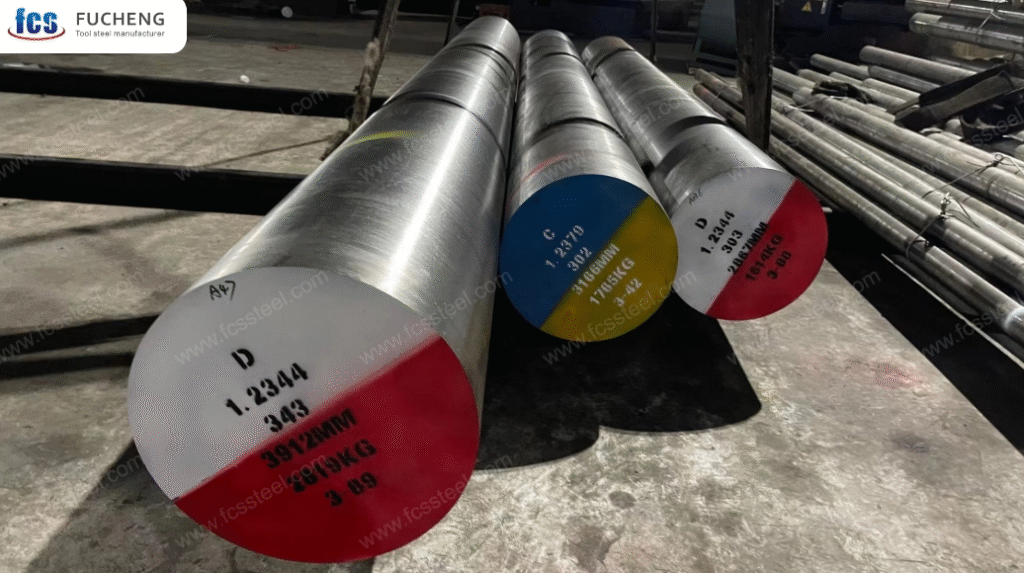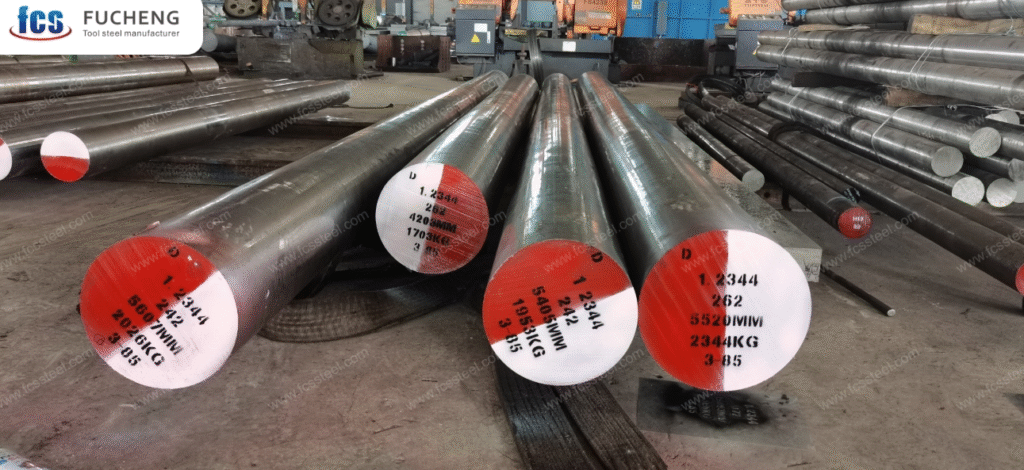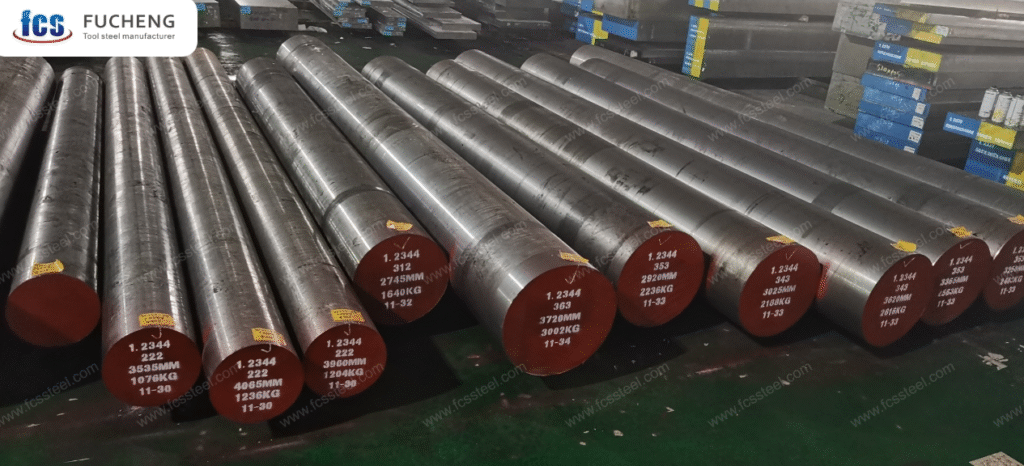Austria has long been recognized as one of Europe’s hubs for high-quality precision forging, particularly in sectors such as automotive, aerospace, railway, and energy equipment. The demand for complex geometries, tight tolerances, and materials that can withstand harsh operating conditions has made the choice of tool steel critical for mold and die manufacturers. Among the most widely adopted materials is 1.2344 steel (also referred to as H13 in the U.S. standard or X40CrMoV5-1 in DIN notation).
This hot work tool steel is favored for its excellent combination of toughness, resistance to thermal fatigue, and dimensional stability at high temperatures. In Austria’s forging shops—particularly in Linz, Styria, and Upper Austria—1.2344 is extensively applied to extrusion dies, forging dies, trimming tools, and hot shear blades. Its widespread use reflects both technical suitability and strong compatibility with Austria’s precision forging practices.
In this article, we will outline 8 key use scenarios of 1.2344 steel in Austria’s precision forging industry, while discussing the material characteristics, design considerations, and performance metrics that drive its adoption.

Extrusion Dies for Aluminum and Copper Alloys
Extrusion dies represent one of the most critical tooling applications in Austria’s forging industry, especially for producing lightweight automotive components and conductive copper profiles.
Why 1.2344?
- High hot wear resistance ensures long service life in direct contact with high-temperature billets.
- Superior thermal conductivity reduces the risk of localized overheating.
- Good polishability supports the production of high-quality surface finishes on extruded products.
Design Notes for Austria’s Plants:
- Incorporation of optimized cooling channels, enabled by 1.2344’s machinability.
- Use of nitriding and PVD coatings to further enhance wear resistance.
According to data from the Austrian Aluminum Association, extrusion die life can increase by 20–30% when 1.2344 is selected over lower-grade hot work steels.
Closed-Die Forging Dies for Automotive Components

Austria’s automotive forging sector—serving BMW, VW, and Mercedes-Benz supply chains—relies heavily on closed-die forging to produce crankshafts, gears, and suspension parts.
Why 1.2344?
- Exceptional toughness reduces risk of die cracking under repeated hammering.
- Resistance to hot deformation provides stable die dimensions across thousands of cycles.
Performance Metric:
Studies published by the German Forging Association (Industrieverband Massivumformung) show that 1.2344 dies achieve up to 50,000 forging cycles in automotive component production, compared to ~30,000 with conventional steels.
Trimming Dies in Precision Forging
After hot forging, trimming operations are essential for removing flash and ensuring accurate part profiles.
Why 1.2344?
- Combines edge stability with sufficient toughness to resist chipping.
- Maintains hardness (~46–52 HRC after heat treatment) under elevated operating temperatures.
Design Consideration:
- Regular nitriding cycles enhance surface hardness up to 1,100 HV, extending trimming die life significantly.
In Austrian foundries, trimming dies made of 1.2344 can last 1.5–2 times longer than those made from 1.2714 (a traditional choice).
Hot Shear Blades for Billet Cutting

Billet preparation is a crucial step in forging. Hot shear blades must cut billets at temperatures ranging from 900–1,200 °C.
Why 1.2344?
- Retains hardness and strength even at high red-hot cutting temperatures.
- High thermal shock resistance prevents cracking during repeated thermal cycling.
Operational Example:
- Steelworks in Linz report that 1.2344 shear blades reduce downtime by up to 20%, thanks to slower wear and fewer blade replacements.
Preforming Dies for Multi-Stage Forging
In Austria, complex automotive and aerospace parts are often produced through multi-stage forging, where preform dies shape billets before final forging.
Why 1.2344?
- Strong dimensional stability avoids premature misalignment in successive stages.
- Excellent machinability supports production of intricate die geometries.
Lifecycle Data:
- Preforming dies of 1.2344 show 15–20% higher reliability in aerospace forging applications, compared to steels with lower molybdenum content.
Isothermal Forging Dies for Aerospace Alloys
Austria supplies forged titanium and nickel-based alloys for the European aerospace sector, particularly Airbus and Rolls-Royce. These alloys demand high-precision isothermal forging under extreme conditions.
Why 1.2344?
- Maintains thermal stability and minimizes heat checking even above 600 °C.
- Excellent compatibility with surface coatings (e.g., TiN, AlCrN) to resist adhesive wear from titanium alloys.
Added Value:
With isothermal forging, 1.2344 enables tighter tolerances (<±0.05 mm), critical for aerospace turbine components.
Tooling for Heavy-Duty Open-Die Forging

Open-die forging is used in Austria for large-scale industrial parts such as shafts for hydropower turbines and wind energy components.
Why 1.2344?
- Exceptional resistance to thermal shock during long forging sequences.
- Reliable mechanical strength in large-section dies.
Performance Note:
While 1.2344 is not the only option (1.2714 and 1.2367 are also common), its balance of toughness and hot strength makes it an industry favorite for medium-to-large open-die tooling.
Repair and Reconditioning of Worn Dies
Austria’s forging industry places emphasis on sustainable practices and die life extension. Reconditioning of dies by welding, machining, and re-heat treatment is a common practice.
Why 1.2344?
- Excellent weldability with compatible filler rods.
- Retains mechanical properties after multiple heat treatment cycles.
Lifecycle Advantage:
By applying proper reconditioning protocols, Austrian forging shops report that 1.2344 dies can be reused for up to 60–70% of their original lifespan, reducing total tooling cost per part.
Conclusion
The role of 1.2344 steel in Austria’s precision forging industry is not limited to a single application. Instead, its versatility allows it to serve extrusion dies, forging dies, trimming tools, hot shear blades, aerospace isothermal tooling, and even reconditioned dies. Its performance indicators—ranging from thermal fatigue resistance to machinability and surface treatment compatibility—make it the material of choice for many Austrian forging plants.
For engineers, toolmakers, and procurement managers, understanding these 8 use scenarios helps guide material selection, optimize tooling investment, and ultimately enhance productivity in Austria’s highly competitive forging landscape.
